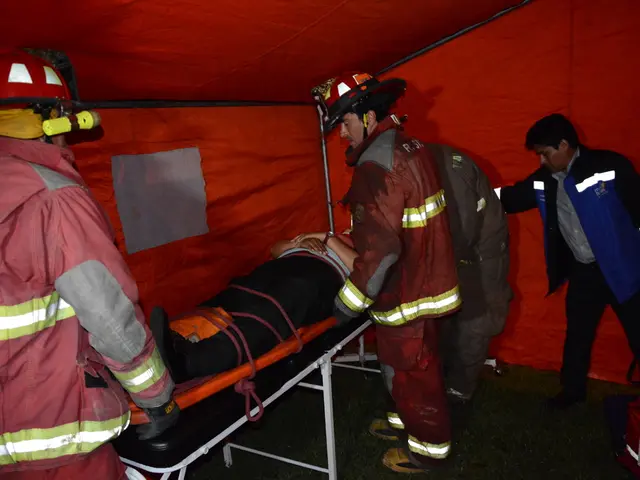Distinguishing Age Spots from Skin Cancer: Identifying the Key Differences
Harmless Age Spots vs Skin Cancer: Recognizing the Differences
As you age, the appearance of age spots on your skin might leave you concerned about potential skin cancer. While both conditions share some similarities, understanding the differences can help you identify when medical advice is necessary.
Age Spots and Skin Cancer: Comparing the Differences
Age spots, also known as solar lentigines or liver spots, and skin cancer can have similar appearances, but there are key distinctions that help identify which condition is present.
Age Spots
These small, dark patches are generally flat, yellow, brown, or gray and have well-defined borders. Their size can vary from a few millimeters to centimeters, and they usually develop on sun-exposed areas such as the face, hands, shoulders, feet, arms, and back. Age spots are more common in middle age and are more prevalent in light skin. They result from melanin production in response to sun exposure. Unlike skin cancer, age spots are not harmful and do not require treatment or removal.
Skin Cancer
Skin cancer, on the other hand, is a type of cancer that can occur on various skin types. It typically develops in areas with significant sun exposure due to UV radiation damage. Skin cancer growths can exhibit a range of colors, including pink, red, yellow, brown, blue, or black, and may be raised or have irregular, blurred, or ragged edges. Potential signs of skin cancer include changes in size, color, or shape, multiple colors within a single spot, distinctive border Irregularities, and the presence of raised, red patches, pale or yellow firm patches, or crusty or scaly patches.
When to Seek Medical Attention
It's important to monitor any unusual or changing marks on the skin and contact a healthcare professional if symptoms of skin cancer or precancerous growths, such as actinic keratosis, appear. Early diagnosis of skin cancer increases the chances of successful treatment. If a mark on the skin changes in color, shape, size, or location, looks different from other marks on the skin, or itches, crusts, scabs over, or bleeds and does not heal within four weeks, seek medical advice.
Diagnosis and Treatment
Diagnosis of age spots generally involves a physical examination performed by a doctor or dermatologist. If required, a skin biopsy may be performed to rule out other conditions like skin cancer or actinic keratosis.
Treatment options for age spots are cosmetic and aim to reduce their appearance. These may include chemical peels, laser therapy, cryotherapy, and topical creams and lotions available over-the-counter or by prescription. For skin cancer, treatment varies depending on the type and stage of the cancer, as well as individual circumstances. Treatment options may include topical therapies, surgery, radiation therapy, chemotherapy, and immunotherapy.
In conclusion, age spots, skin cancer, and actinic keratosis can share some similar appearances, but recognizing the differences in their size, shape, texture, and color can help identify potential health concerns. Regular skin exams and seeking medical attention for any unusual changes to the skin are important for early detection and treatment of skin cancer, which is the most common type of cancer.
- Age spots, while being more common in middle age and prevalent in light skin, are generally flat, yellow, brown, or gray with well-defined borders, whereas skin cancer can have a range of colors and may be raised or have irregular, blurred, or ragged edges.
- Actinic keratosis, a precancerous growth, should be a cause for concern, and any changes in size, color, shape, or location of a mark on the skin or a mark that looks different from others, itches, crusts, scabs over, or bleeds and does not heal within four weeks should be reported to a healthcare professional.
- Diagnosis of age spots usually involves a physical examination, whereas for skin cancer, a skin biopsy may be necessary to rule out other conditions.
- Treatment options for age spots are cosmetic and aim to reduce their appearance, while treatment for skin cancer varies depending on the type and stage, and may include topical therapies, surgery, radiation therapy, chemotherapy, and immunotherapy.
- Understanding the differences between age spots and skin cancer can help in early detection of potential health concerns.
- Regular skin exams and seeking medical attention for any unusual changes to the skin are important for early detection and treatment of skin cancer, which is the most common type of cancer, and a serious medical-condition requiring health-and-wellness science and oncology expertise, as well as skin-care and skin-conditions knowledge.








